“The father of them all”: How the Barracuda drone’s legacy flies on
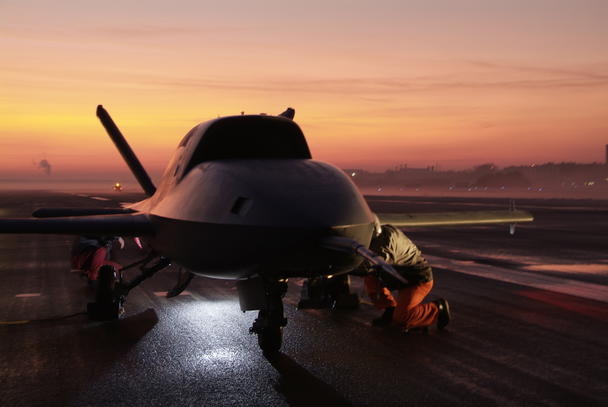
Some 20 years ago, Airbus pioneers made a unique drone technology demonstrator fly in just 40 months. After six test campaigns, the Barracuda was retired. But its technologies will fly on - in two of Europe's largest defence projects: the Eurodrone and the Future Combat Air System.
The most emotional moment in Peter Hunkel's professional life lasted all of 15 minutes. Flashback to Sunday, April 2, 2006: The wall clock in the ground control station at San Javier/Murcia Airport in Spain shows 6:14 a.m. It's time to get going. After receiving the ‘take off’ command at the click of a mouse, the unmanned Barracuda technology demonstrator automatically releases its brakes, goes into full thrust and takes off after less than 1,000 metres. The drone flies autonomously over the Mediterranean as programmed and lands safely at 6:30 a.m. All the tension of the past few months dissipates as the team at the ground station and on the tarmac cheer exuberantly.
"It was an incredible feeling, we had achieved the seemingly impossible," says Peter Hunkel, who, as programme manager, made the Barracuda fly with a core team of 35 colleagues. And they did it in record time: it took just 40 months from the first design of the aircraft to the first flight. "That's very impressive - other aircraft often take decades to take off for the first time," explains Mario Kalanja, who designed the Barracuda.
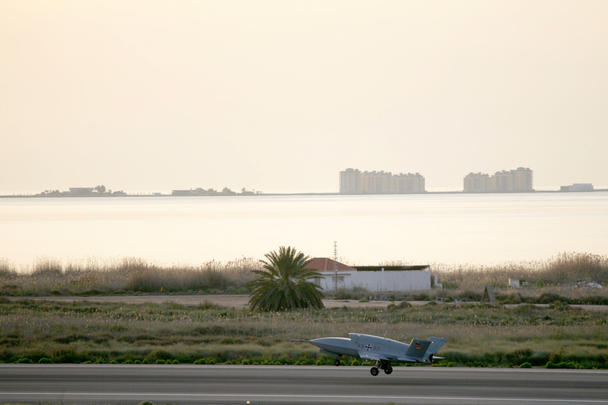
The Barracuda takes off on its maiden flight
Secret programme, small bubble and agile development
The Barracuda project was launched in early 2003 at Airbus in Manching, Europe's leading military aviation centre. Initially, the project was run in secrecy as a so-called "black programme". And that was a good thing, recalls Thomas Gottmann, the Barracuda's chief engineer at the time: "We were few people, in one building, had short distances, hardly any admin, and the full support of management. In short, we were working in a bubble and needed only to worry about one thing: developing the largest unmanned aircraft in Europe at the time in the shortest possible time." To do this, the team closely analysed civil and military aircraft development, then streamlined and simplified it.
"We were 'agile' before the term was even invented," adds Peter Hunkel. The project was financed from the company's own funds, with additional support from the German Federal Ministry of Defense, the German Procurement agency BAAINBw and the Wehrtechnische Dienststellen (WTD).
"Building an aircraft that looks like a combat aircraft"
The result is something to behold: The jet-powered Barracuda is made almost entirely of carbon fiber composites. It is over eight metres long and its wingspan measures over seven metres. Its maximum take-off mass is more than three tons. The Barracuda flies automatically and is connected via several data links to the ground control station from which the aircraft is monitored and commanded only by high-level commands.
But why does the Barracuda actually look the way it does? "I was tasked to design an unmanned aircraft that would look like a 'combat aircraft’," explains designer Kalanja. "It was also to be stealthy and have a low radar signature. In that respect, the stealth and aerodynamics rules dictated the design to have similar leading and trailing edges for the wings and for vertical and horizontal tails to keep radar reflections aligned in certain directions.”
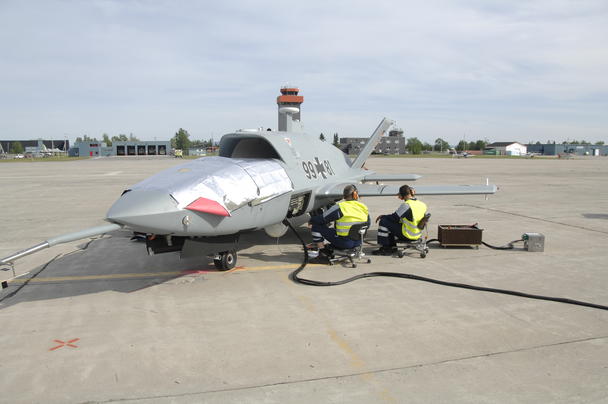
The ground crew working on the Barracuda technology demonstrator.
Setback, comeback and 6 successful flight campaigns
The project suffered a setback in September 2006 when the Barracuda crashed into the sea on its second test flight during the landing approach. After a thorough investigation of the causes in collaboration with the German Air Force, the platform was rebuilt, incorporating the results of previous tests and the necessary improvements. Two and a half years later, in 2009, the Barracuda launched again. In this flight campaign, the team tested the drone's reconnaissance capabilities and how its flight path could be shaped using the images and video it transmitted.
This was followed in 2010 by tests of the co-operative anti-collision system, which allows the drone to avoid other aircraft, such as commercial airliners. Structure integrated antennae were also tested on the Barracuda. In 2012, the team tested how to automatically adjust the drone's flight path, for example, if the airspace proves impassable due to a threat. Automatic ground target recognition was also demonstrated during the 2012 flight campaign. The final flight campaign tested how the Barracuda can monitor and track targets in combination with a manned aircraft with data fusion from different sensors on different flying platforms.
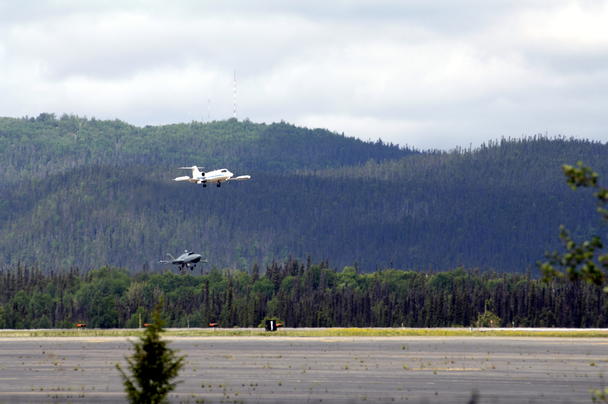
The Barracuda flying in tandem with a Learjet
The legacy flies on
All of these technologies are now ready to launch for two of the largest defense projects in Europe: the first large-scale European military drone, Eurodrone, and the Future Combat Air System (FCAS). "The Barracuda is the father of them all," Hunkel says. "A lot of it goes back to our demonstrator." That's true, for example, of the Intelligence, Surveillance, Target Acquisition, and Reconnaissance technologies that will be used in the Eurodrone when it enters service later this decade.
FCAS, which is expected to be operational by 2040, will also benefit from the technologies and lessons learned from the Barracuda. Especially when it comes to the interaction of manned and unmanned aircraft. In FCAS, Remote Carrier drones with different sizes and capabilities are vital assets. They will operate in a team with the manned New Generation Fighter and the Eurofighter, supporting their pilots in their missions and taking on dangerous tasks such as taking out enemy air defences or investigating potential threats in hostile territory.
"None of this would be possible without the Barracuda UAV (Unmanned Aerial Vehicle) system," says Thomas Gottmann, adding, "the Barracuda is truly unique - it's good to know that some of the things we developed then will fly on in the latest state-of-the art products, helping to ensure Europe’s sovereignty and autonomy."
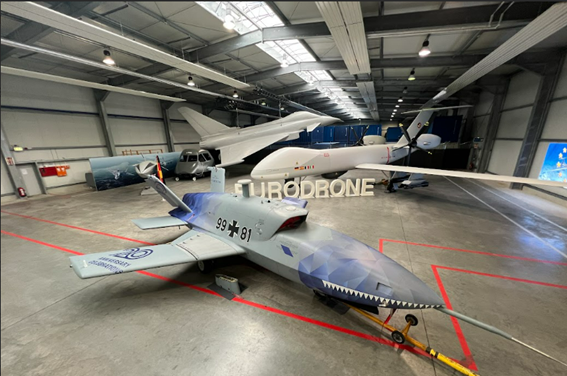
The Barracuda in its special 20 year anniversary livery. In the background: a 1:1 model of the Eurodrone, which will use technologies developed on the Barracuda technology demonstrator.
Watch this video and find out more about the Barracuda.
Click here to read more about Eurodrone, and here for more on FCAS.